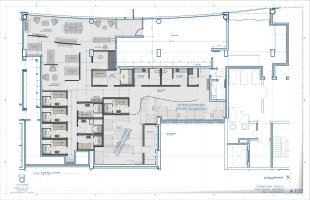Ryan Schultz
SAWHORSE
Helping a client design a spa. As you can see from the floor plan, each room has a sauna and cold plunge.
The cold plunge looks something like this.
Question: Like the 5% rule for saunas, I assume at least 5% of the cold plunges need to be accessible as well, correct?
If that be the case, does this ADA cold plunge need something like a swimming pool chair lift to make it accessible?

The cold plunge looks something like this.
Question: Like the 5% rule for saunas, I assume at least 5% of the cold plunges need to be accessible as well, correct?
If that be the case, does this ADA cold plunge need something like a swimming pool chair lift to make it accessible?


